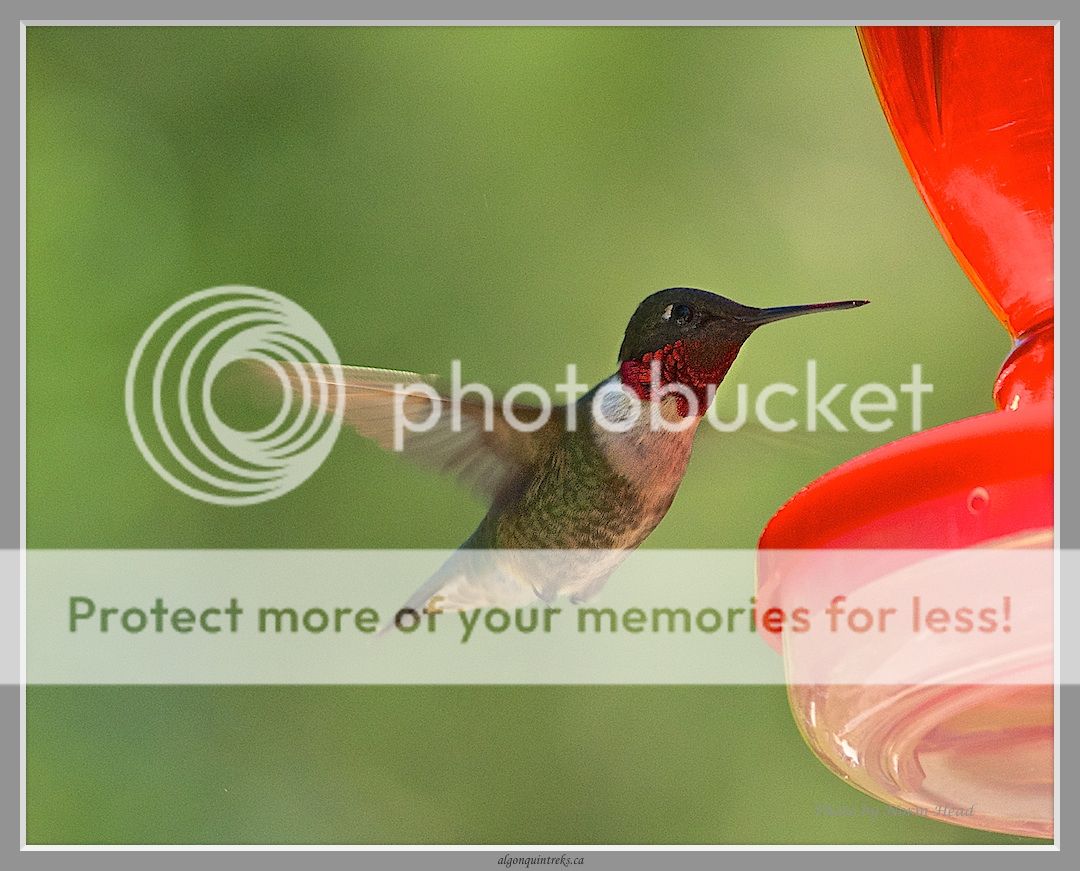 Originally posted by manacho2005
Originally posted by manacho2005 
You're probably going to need a lens that is +200mm unless the birds are immune to your presence. I would suggest either Manual or TAv. That way your can maintain your DOF while adjusting your shutter speed to either blur the wings or freeze them.
Hope you have fun...
Agree on the 200mm+. I've had good luck shooting birds with the 55-300mm Pentax zoom. Freezing a hummingbird's wings is not going to happen with that lens though, even with the aperture full open at 300mm with that lens (5.6) you aren't going to get much beyond 1/1000 in broad daylight without going to an ISO over 3600. It's just not that fast a lens, but you do need reach to get a hummingbird if you're hand-holding in the wild and that's the lens that Pentax has so (shrug). Anyhow, given that hummingbird wings beat at around 200 beats/second, you can see how that would still leave the wings being blurred, they'd seem rather smudged and out-of-focus. It seems better to me to go to a slower shutter and lower ISO and have artistically blurred wings (and sharper body) if that's the case, rather than wings that look smudged. Though here's a hummingbird from my collection shot at 1/800, the wings are blurred as you'd expect but the effect isn't bad at all...

Doing some Googling, I discovered that most folks who freeze the wings of hummingbirds do so by setting up a hummingbird feeder in a slightly darkened environment with a backdrop behind it, then they use a bright prime on a tripod focused on the feeder with a fast flash. They then use the flash to freeze the wings and a remote of some kind to trigger the camera and flash from a distance when they see the hummingbird at the feeder. The problem there is that hummingbird feathers are reflective, and they reflect the flash, so the hummingbird doesn't end up looking natural. It seems to me that accepting wing blur is a fair exchange for a more natural looking hummingbird, but (shrug) it all depends on your artistic sensibility I suppose. I shoot wildlife hand-held in the wild, so that doesn't appeal to me. But different strokes for different folks I guess.


 Similar Threads
Similar Threads 





























